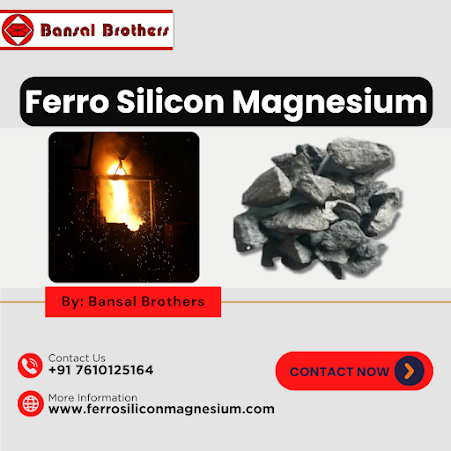Spheroidizing Methods for Ductile Iron: Techniques, Processes, and Best Practices!
Ductile iron, also known as nodular or spheroidal graphite iron, is widely used in industries requiring high strength, durability, and excellent machinability. The key to ductile iron's superior mechanical properties lies in the spheroidization process, which transforms graphite flakes into spheroidal nodules. This process enhances ductility, toughness, and resistance to impact, making ductile iron a preferred material for various applications, including automotive, construction, and pipeline systems.
This article explores the spheroidizing methods for ductile iron, detailing techniques, processes, and best practices to achieve optimal results in manufacturing.
Understanding Spheroidization in Ductile Iron
Spheroidization is the process of converting graphite flakes in cast iron into rounded nodules. This transformation is achieved by adding specific alloying elements, primarily magnesium (Mg), which prevents the formation of flaky graphite structures and promotes the development of spherical nodules.
Techniques for Spheroidizing Ductile Iron
There are several methods used to introduce magnesium or other nodularizing elements into the molten iron. The choice of method depends on factors such as furnace type, casting process, and production requirements. The most commonly used techniques include:
1. Magnesium Ladle Treatment
This is the most widely used method for spheroidization. The process involves placing a magnesium alloy inside a ladle before pouring the molten iron over it. The reaction between molten iron and magnesium releases gases and forms nodular graphite.
Advantages:
Suitable for large-scale production.
Provides consistent results.
Efficient in controlling magnesium content.
Challenges:
Requires precise control over magnesium addition.
Magnesium losses due to oxidation can affect efficiency.
2. In-Mold Process
In this technique, magnesium is introduced directly into the mold cavity before pouring molten iron. When the iron enters the mold, the magnesium reacts and forms nodular graphite.
Advantages:
Reduces magnesium fading since the reaction occurs just before solidification.
Minimizes oxidation losses.
Challenges:
Limited to specific casting applications.
Requires careful mold design.
3. Tundish Cover Method
In this process, molten iron flows through a tundish (a refractory-lined container) containing magnesium alloys before being poured into molds.
Advantages:
Ensures uniform magnesium distribution.
Reduces exposure to air, minimizing oxidation losses.
Challenges:
Requires specialized equipment.
Not ideal for small-scale production.
4. Cored Wire Injection
This method involves injecting a cored wire filled with magnesium into molten iron in a controlled manner. This technique allows precise control over magnesium content and reduces fading effects.
Advantages:
Highly efficient and precise.
Suitable for continuous casting and high-volume production.
Challenges:
Requires specialized equipment and automation.
Higher initial setup costs.
Processes Involved in Spheroidization
Regardless of the technique used, the spheroidizing process follows these key steps:
Preparation of Base Iron: Ensure the base iron has a low sulfur content (preferably below 0.02%) since sulfur reacts with magnesium and reduces spheroidization efficiency.
Addition of Nodularizing Agents: Magnesium, cerium, or other rare earth elements are introduced using one of the spheroidizing methods.
Inoculation: Inoculants such as ferrosilicon (FeSi) are added to promote graphite nodule formation and reduce undercooling.
Pouring and Solidification: The treated iron is poured into molds, where spheroidal graphite structures develop during solidification.
Quality Control: Microstructural analysis and mechanical testing ensure that the desired nodular graphite structure has been achieved.
Best Practices for Effective Spheroidization
To achieve optimal spheroidization in ductile iron production, consider the following best practices:
Control Sulfur Content: Low sulfur levels improve magnesium absorption and prevent unwanted reactions.
Optimize Magnesium Addition: Use the right amount of magnesium to avoid excess fading or excessive reactions leading to high porosity.
Ensure Proper Inoculation: Adequate inoculation promotes uniform graphite distribution and prevents carbide formation.
Monitor Temperature Control: The ideal treatment temperature should be maintained to ensure complete magnesium reaction and nodule formation.
Use High-Quality Raw Materials: Impurities in the raw materials can impact graphite morphology and mechanical properties.
Conduct Regular Testing: Microstructural examination and mechanical testing help verify the effectiveness of the spheroidizing process.
Conclusion
Spheroidization is a crucial step in the production of ductile iron, directly influencing its mechanical properties and performance. Various spheroidizing methods such as magnesium ladle treatment, in-mold processes, tundish cover methods, and cored wire injection offer unique benefits depending on production requirements. By following best practices, manufacturers can achieve high-quality ductile iron with excellent strength, ductility, and durability.
Understanding and implementing the right spheroidizing techniques ensures consistent and reliable production, making ductile iron a preferred choice across industries. With continuous advancements in metallurgy and foundry technology, spheroidizing methods will continue to evolve, enhancing efficiency and product performance.
#SpheroidizationProcess, #SpheroidizingMethodsForDuctileIron, #SpheroidizingTechniques #CoredWireInjection


Comments
Post a Comment